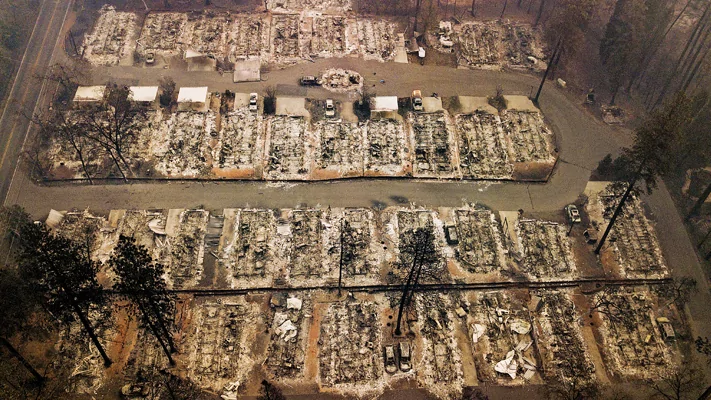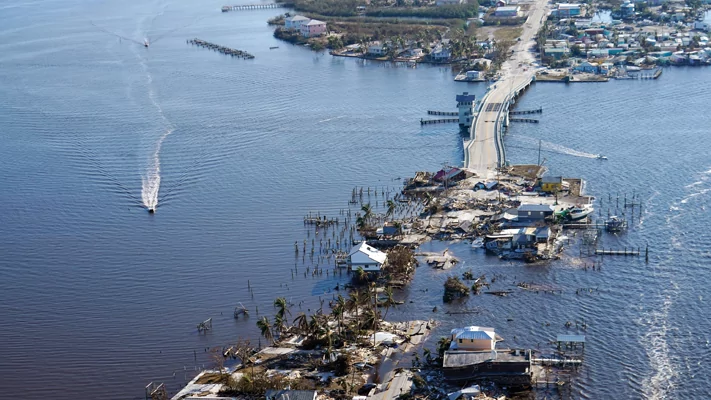
As the Democrats made their pitch for Vice President Kamala Harris at the national convention in Chicago in August, one question weighing on many voters could be stated: “Can we afford four more years of this?”
The Biden-Harris administration hasn’t been all bad economic news. On the upside, the United States dodged a recession that hit much of Europe from late 2023 to early 2024.

At the same time as the nation was dodging a recession, the Federal Reserve managed to hike interest rates high enough to knock down inflation from ruinous levels. Employment may be squishy, but it remains high by historic levels. All told, things could be much worse.
That’s why, once we push past the vibes and joy, Harris is running as the candidate of continuity. And her administration promises to be progressive in roughly the same way that President Joe Biden’s administration has been progressive.
Like Biden, Harris has indicated that she will want her regulators to push boundaries and will demand that any Democratic majority in Congress rubber-stamp more federal spending on things ranging from kindergarten to Kursk. She wants more central control of nearly every other part of the economy.
Conservatives hate this. Many swing-state suburbanites, who will likely elect the next president, are as-yet undecided. According to surveys, Biden was losing this vital cohort. Harris is polling slightly better, for obvious reasons.

In July, a Pew Research Center survey found that 53% of voters “would like to see both Biden and Trump replaced as candidates.” Thus, that temporary support for Harris would buoy the Democratic ticket once the party tossed Biden overboard was to be expected.
Yet the doubts that applied to Biden’s handling of the economy threaten Harris, too. With a few exceptions, polls have found that would-be voters trust former Republican President Donald Trump on the economy, inflation, and immigration more than his Democratic rivals.
Biden argued that he ought to get credit for a perfectly good economy. Republicans retorted that voters could not afford this good economy, and phenomena such as $8 eggs and $48,000 new vehicles only seemed to confirm this.
Harris has tried to take the bull by the horns by acknowledging price hikes and promising price controls as a remedy. This led Adam Ozimek, chief economist at Economic Innovation Group, to quip, “Had not occurred to me to just ban inflation.”
Price controls, thoroughly reviled by economists of all parties, are a meaty enough target that the GOP can be expected to continue to attack that proposal between now and Election Day. One of its weapons of choice will likely be personal insurance.
California schemin’
Personal insurance, typically home and automobile insurance and the related flood and earthquake insurance, could prove an attractive target because of where Harris hails from. California is the state in the nation with arguably the worst regulatory environment for insurance companies to make a profit. This is because of an initiative passed in 1988 and subsequent heavy-handed insurance regulations.
“Proposition 103 instituted a regulatory system where the Insurance Commissioner must approve a rate applied for by an insurer before its use, known as the ‘prior approval’ system, before an insurer can implement property and casualty insurance rates,” the website of California Insurance Commissioner Ricardo Lara explains.
The state agency adds that “thorough, impartial review by the Department’s rate regulation experts has saved Californians billions of dollars in premiums while helping to maintain a solvent market able to pay consumers’ claims.” This is all true — except that insurers are currently fleeing the state, America’s largest single market. Their exodus is making it extraordinarily difficult for many Californians to purchase insurance.

“California’s Prop 103 regulatory system makes it extraordinarily difficult for insurers to achieve rate increases, and after enormous wildfire losses, a number of the largest carriers have either threatened to exit the market or have actually done so,” Ray Lehmann, editor-in-chief of the International Center for Law and Economics, told the Washington Examiner in an email.
He added that after “decades of state officials sticking their head in the sand about the nature of the problem, the governor and insurance commissioner have in the past year attempted to enact a series of reforms that would liberalize the market somewhat and keep the remaining companies from heading for the exits.”
Strict price controls on insurance in Harris’s own state have led to exactly what economists would predict: shortages.
Inflation’s greatest hits
There’s another side of the personal insurance problem that could make it a sleeper issue in this election. Prices of most goods adjust to inflation gradually. An apple might cost $1 this week, $1.01 next week, and climb to $1.35 in a year. If it made that jump in a single week, it would make more of an impression.
Insurance policies tend to be renewed annually on a rolling basis. That means a huge number of people are getting hit with significant hikes all at once. Marty Stauffer, an insurance broker at his own Stauffer Insurance, is having to break this bad news to his clients.
“The average rate increase is typically about 20-30%,” Stauffer told the Washington Examiner in his Lynden, Washington, office. Lehmann demonstrated that the numbers were up nationally as well.
“According to the U.S. Bureau of Labor Statistics’ Producer Price Index (PPI), the average monthly cost of private passenger auto insurance has risen 18.8% from $164.50 (or $2,290 annually) in July 2020 to $190.80 (or $2,720 annually) in July 2024,” Lehmann said. “By contrast, the increase from July 2016 to July 2020 was about 16% and from July 2012 to July 2016 was 13.1%. So, auto has been on a path of steeper increases over time.”
According to the same metrics, homeowners insurance has climbed 14.3% “from $213.40 ($2,561 annually) in July 2020 to $243.96 ($2,927 annually) in July 2024.” That came on the heels of a very modest increase of 4.3% for the previous four years.
The insurance broker said that what he is seeing now is called a “hard market.” We might think of it as a seller’s market, except the reason for it is massive losses in recent years. In many cases, insurers are simply turning clients down or quoting rates that amount to a turndown.
“They don’t want a lot of new business because most business is leading to loss,” Stauffer said.
If there is a silver lining, it’s that insurers are “looking for their favorite customers” and those favored few are “getting the smaller increases.”
The reason for the current hard market is that things have gotten more expensive and riskier in the last four years. The cost of claims has climbed due to higher rebuilding costs, rising auto-body rates, and higher medical bills. Insurance companies are trying to price these costs, plus higher reinsurance costs, into their premiums.
The repricing process is putting one of the worst effects of the Fed trying to finance the Biden-Harris administration’s big spending front and center. By vastly increasing the money supply, the central bank made all of the individual units that people had socked away worth less. This makes everything, including insurance, cost more.
Sunshine basket case
One unanticipated advantage of Republicans picking Trump over Gov. Ron DeSantis (R-FL) in this election cycle is that the Sunshine State has created a serious hazard with its own property insurance market. “Florida and California have been the notable basket cases,” Lehmann said.
After storms devastated the state in 2004 and 2005, Florida adopted the strategy of loading a “huge amount of risk onto the state-backed insurer, Florida Citizens, and the state-backed reinsurer, the Florida Cat Fund.”
Consequently, the state market has “been dominated in the years since by dozens of tiny, thinly capitalized, domestic insurance companies that only wrote homeowners and only wrote it in Florida,” he said.
The state lucked out with a hurricane-light decade between 2006 and 2016 but has been hit hard in recent years. Homeowners insurance litigation plus those hurricanes have meant that “more than a dozen domestic insurers have already been declared insolvent and dozens more are on the brink.”
CLICK HERE TO READ MORE FROM THE WASHINGTON EXAMINER
The problem predates DeSantis. He has addressed it not by curbing government incentives but by reforming torts.
“DeSantis and the legislature have passed reform legislation intended to address the runaway litigation issues, but it remains unclear whether that will be sufficient to stabilize the market” or if a few more bad storms ruin it for all 23 million and counting Floridians, Lehmann said.
Jeremy Lott is a regular contributor to the Washington Examiner.







